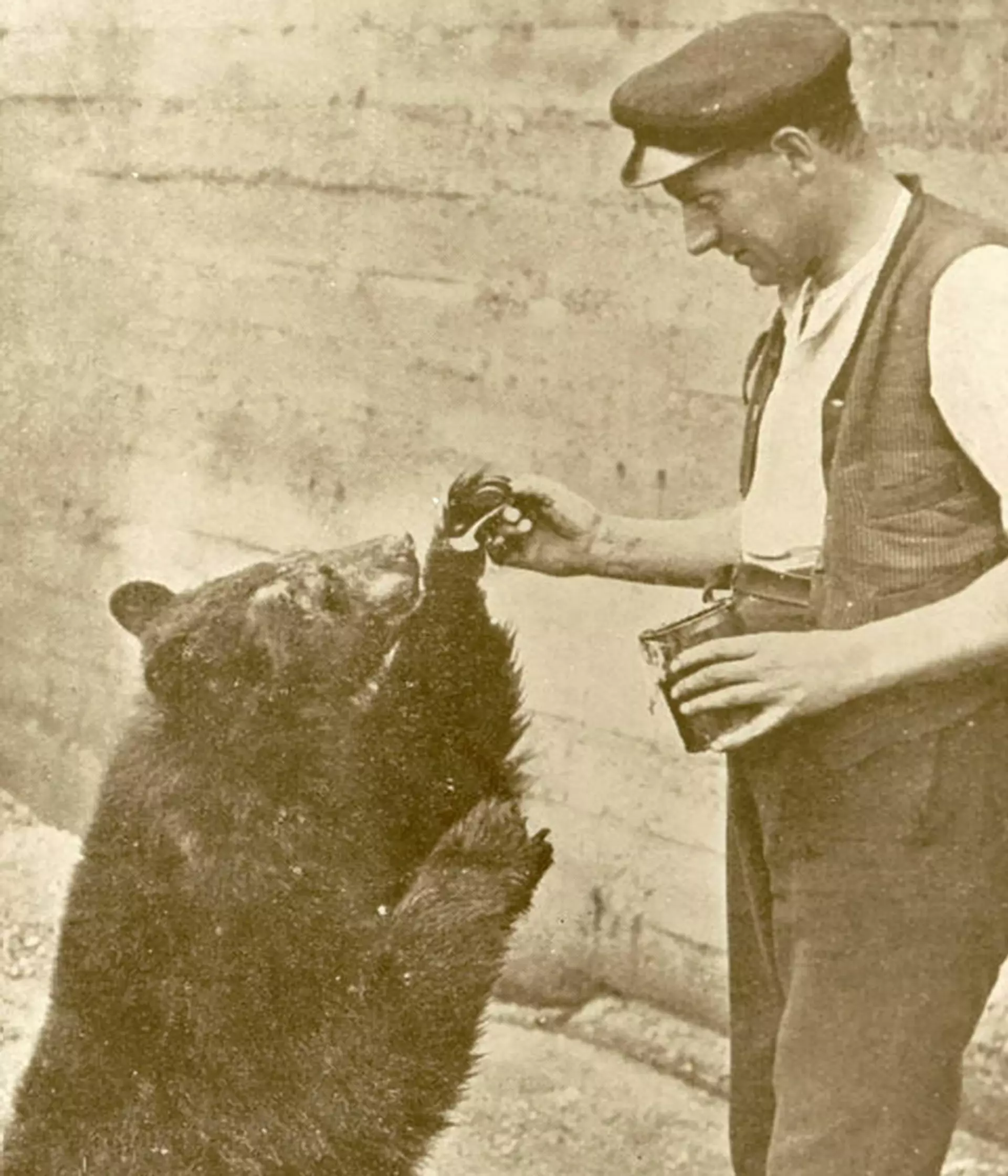Real Winnie the Pooh
There’s a story behind every sculpture at London Zoo, but one of the most extraordinary belongs to this statue of Lieutenant Harry Colebourn and his beloved pet bear Winnie. Born in Britain in 1887, Harry Colebourn emigrated to Canada as a young man and trained as a vet before going on to join the Royal Canadian Army Veterinary Corps. While travelling across Canada to join his regiment and serve in World War I, he bought a female black bear cub in White River, Ontario, from a hunter who had killed her mother. Colebourn named the bear ‘Winnie’ after his then home-town, the city of Winnipeg.
When Lieutenant Colebourn’s regiment was sent to train in England in 1914, Winnie accompanied him. She became a pet and unofficial mascot to the Second Canadian Infantry Brigade during their time on Salisbury Plain. Colebourn was not, however, permitted to take Winnie with him when the brigade deployed to the battlefields of France. He left her in the keeping of London Zoo on 9 December 1914, hoping to return after the war to reclaim her.
Colebourn served heroically during the war, rising to the rank of Captain. Although he visited his beloved Winnie when he was on leave from France, he ultimately decided that the Zoo was the best place for her to live. He donated her permanently in gratitude for her care in 1919.
Inspiring Dumbo's name
Jumbo the elephant
The remarkable life story of Jumbo the elephant - the animal superstar who is said to have inspired the movie Dumbo.
Winnie the Pooh at London Zoo
Living at the Mappin Terraces, tame and gentle Winnie had become hugely popular with visitors to the Zoo, particularly children. Among her many regular visitors were a certain Alan Alexander Milne and his young son, Christopher Robin Milne. Christopher Robin was such a fan that he even renamed his teddy bear Winnie.
When his father – known to generations of readers as AA Milne – began to write stories for Christopher Robin featuring his favourite stuffed toys, the name Winnie stuck, and his bear hero became known as Winnie-the-Pooh. The first Winnie-the-Pooh book was published in 1926, and the series would go on to be loved by children worldwide.
This bronze statue of Winnie and her original owner was sculpted by Canadian artist William (Bill) Epp, and donated to London Zoo by the Canadian province of Manitoba. A copy of an identical statue in Assiniboine Park Zoo, Winnipeg, it was unveiled in 1995.
Winnie the black bear statue
Today you’ll still find this touching statue of Winnie and Lieutenant Colebourn at the Zoo, close to Butterfly Paradise and our war memorial to those who lost their lives in both World Wars. And it’s not the only sculpture of Winnie you’ll find here! Look out for another bronze of Winnie, shown as a young cub, by sculptor Lorne McKean. Located near Animal Adventure, it was unveiled by Christopher Robin Milne in 1981.
